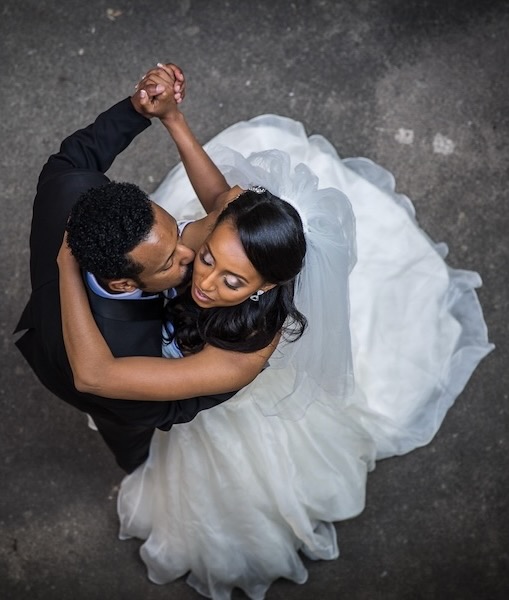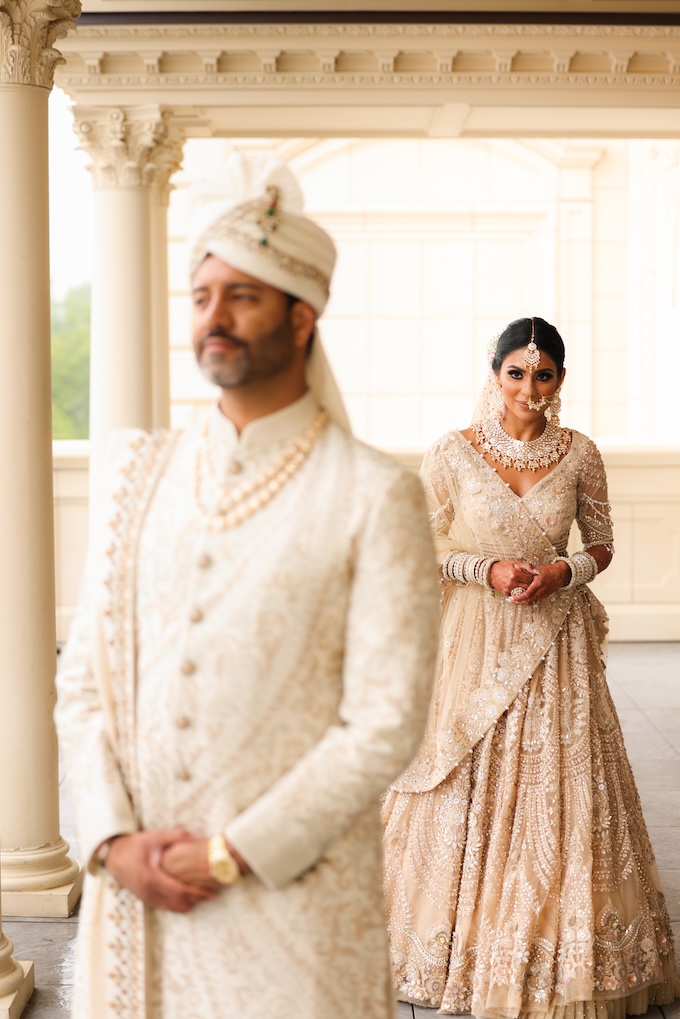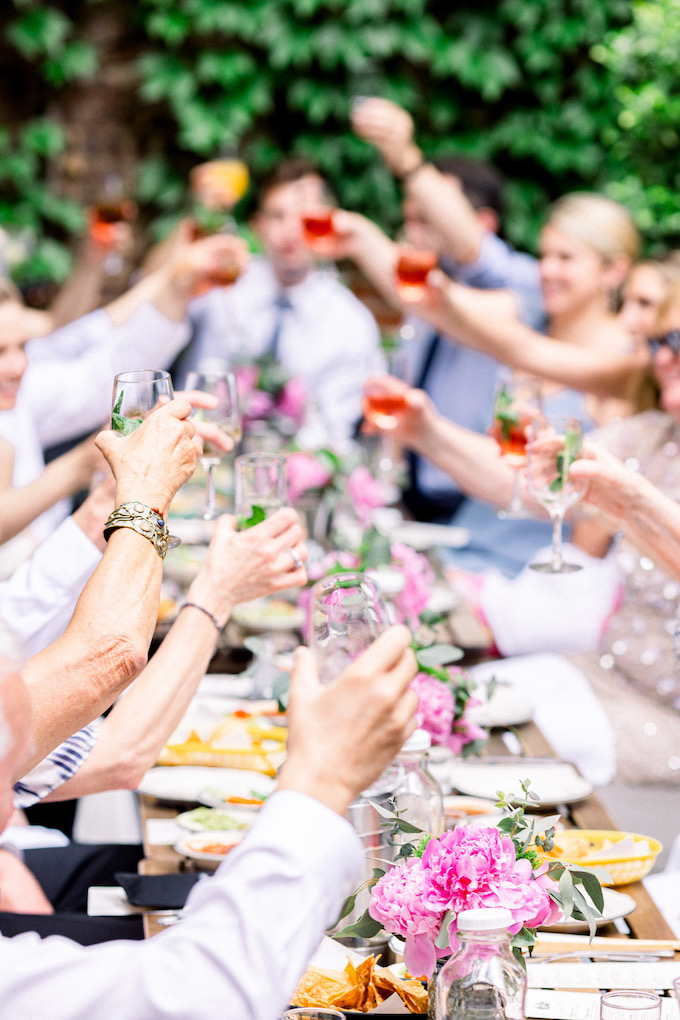Weddings
5/15/2022: This article has been updated and fact-checked.
There are so many beautiful and important rituals and traditions that take place at an Indian wedding; what follows here is just the tip of the iceberg. South Asian weddings vary greatly from region to region and even from family to family, so be sure to always keep your eyes wide open and your camera to your face! While many of these traditions are rooted in the past, these days they are often modernized by our brides and grooms, two brides or two grooms to fit their story, family and love.
[7 Images You Need To Take at a Chinese Wedding]

1. Mangala Snanam
In some families, mangala snanam (holy bath) is done after turmeric is applied, but I most often see it done before in Telegu families that I’ve photographed. The bride (or groom) is “showered” by the family in a purifying bath, now qualifying to participate in everything to come.

2. Pithi/Haldi
In many Hindu families, and before the wedding, both people in the couple—separately with their families—will be smeared in turmeric paste (often inside the home) to purify and beautify them for the wedding day. This tradition can start a bit emotionally with mothers and grandmothers and aunties, but it quickly turns to fun when the cousins and friends get their hands on the paste!
[Reimagining the Aesthetics and Logistics of Formal Family Wedding Portraits]

3. Mehndi/Henna
Traditionally, a few days before the wedding the bride will have Henna paste applied to her hands. The application is meant to cool her, and use mehndi’s medicinal powers to help relieve stress. These days men and women alike participate, and they bring the things they love into it—favorite sports teams, cities, etc. The designs are endless and incredibly beautiful.
In keeping with tradition, be sure to ask the bride if her betrothed’s name is hidden somewhere in her hand and arm designs. And then make sure to photograph her future spouse finding it a few days later. If you have a groom with heavy mehndi, make sure to ask him as well, and photograph him, too.
[Powerful Storytelling Techniques in Wedding Filmmaking]

4. Sehra Bandi
We’ve arrived at the wedding day! One of my favorite parts of a Punjabi wedding is a ceremony where the groom’s family prepares to send him off to the rest of the wedding by tying a headdress with draping garland pieces (sehra) that covers the face of the groom, and putting a small black dot on his face (near his eye or behind his ear) to ward off the evil eye.
Make sure to get friendly with the groom’s sisters because they’re usually tasked with the tying—if they have their guard down, they’re more likely to let themselves be emotional because it’s a big moment for them.

5. Baraat
Back in the day, the groom’s family would band together and adventure to the bride’s town for the wedding. In 2019, we’re just symbolically partying from the parking lot to the mandap (the four-pillared altar in which the ceremony takes place.)
Be sure to bring earplugs! You’ll often have a van with giant speakers leading the procession and a dhol (drum) player, too. It’s a 30- to 60-minute dance party outside where the family and friends celebrate each other, the parents and siblings of the groom and the groom himself.
On the other side of the music, you’ll find the groom dancing and watching everyone dance on their way to his wedding. He’ll often be on a horse or a carriage pulled by a horse, and sometimes a fancy convertible.
[Finding a Home Among the Uniformity as an Orthodox Jewish Wedding Photographer]

6. Milni
After the baraat at Punjabi weddings, the milni signifies the coming together of the two families. They greet each other with garlands (the dads, then uncles, grand-dads, etc.), but more and more I’m seeing this as a tradition for all and not just the men. The guests get to see who all the important people are and the two families get to bond.
After any given pair garland each other, there is a chance they’ll both try to pick each other up for some fun! Consider shooting pretty wide since the crowd tends to be really tight around the action.
[Lessons in Creating More Dynamic Wedding Photos That Wow Clients]

7. Ponkvu
At Gujarati weddings, instead of a milni, the family performs a ceremony called a ponkvu. The bride’s mother greets the groom and welcomes him to the wedding by performing a few minutes of ritual. At some point she will likely make a grab for his nose as a signal to him that she’ll always be keeping an eye on him to be sure he’s treating her daughter well.

8. Jaimala
To kick off the ceremony, the couple garland each other. It’s called the jaimala. Sometimes the couple will make it difficult for each other to reach them (sometimes they’ll go up on family members’ shoulders or sometimes they’ll just keep moving to make it harder).

9. Mangal Phera
During the ceremony, the couple, guided by the priest, will feed a fire. When it’s grown enough, they’ll walk around it four times. (Some traditions walk around seven times!) When it is just four, they represent dharma (devotion to faith), artha (prosperity, for themselves, their family and those in need), kama (love and dedication) and moksha (liberation, freedom from earthly things), and their promise to commit to these goals together.

10. Saptapadi
After the phera, the couple perform saptapadi. These are the seven vows they are making to each other. In my experience, each priest and family has a bit of a different translation, so listen up. Occasionally a hilarious vow or two will pop up!
[Don’t Be Afraid to Take Creative Risks at Weddings]

11. Sindoor
In one of the final moments of many Hindu ceremonies, the groom will rub vermilion powder into the place where the bride’s hair parts. The sindoor signifies that the bride is now a married woman.

12. Talambralu
Primarily a Telugu wedding ritual, talambralu is metaphoric to the couple’s life ahead filled with happiness, prosperity and understanding. The couple exchanges garlands and then shower each other with pearls and tinted rice mixed with saffron and turmeric. It takes place after tying the knot. At first the couple will take restrained turns, with instruction from the priest, though soon it becomes a competition between the couple and makes for really fun photos. The guests also sprinkle the couple with flower petals and rice in the form of blessings for their future together.
[Building an Associate Photo Team: Is It the Right Move for You?]

13. Jutti Chupai
This is a before-and-after-the-ceremony game! When the groom arrives at the wedding mandap (a covered structure with pillars temporarily erected for Hindu or Jain weddings), he removes his shoes, as no one can wear shoes on the ceremonial altar. As they are taken off, the two families will fight over the shoes so that after the ceremony, whoever gets them can demand payment for the shoes. The groom’s family tries to protect the shoes to save their son money while the bride’s family is trying to have some fun with the groom (and make some money)! Consider it lucrative bonding.

14. Vidai
After the ceremony, the bride’s family walks her out with her groom and says their goodbyes. Historically, the wedding was in the bride’s town and she would be leaving to move to the groom’s town. In 2019, my brides aren’t often moving too far, nor are my grooms, but it’s still a really big, emotional moment for everyone. Even though there’s so much good happening, life is fundamentally changing and this moment is the one to feel all the feelings about that.

15. Blocking the Car
You didn’t think we were going to end a ceremony so full of games and joy with tears, did you? After the couple is loaded into the car, the bride’s sisters and girlfriends will stand in front of the car—refusing to let it pass until they are given some money to do so.
There are so many more rituals, too many to show here, including kredana. In many South Indian families, the ceremony continues on after the vows. In kredana, the couple is seated behind a pot filled with water (and sometimes with vermilion powder, milk, flowers, etc.). The priest drops a ring in the water and the couple searches for it. Whoever finds it first wins! They go for the best of three, with the winner symbolically having the upper hand in marriage. Often, they will pull the third one together for balance.
Charmi Peña is a documentary wedding photographer, educator and Nikon Ambassador based out of Princeton, New Jersey. Her success as a wedding photographer specializing in Indian and Southeast Asian weddings stems from her passion for preserving the intimacy of weddings, especially those of her own culture, and her desire to honor all wedding traditions by capturing them with the respect they deserve.
Related: 4 Women Leading the Charge to Diversify the Wedding and Portrait Photography Industry
12 Successful Wedding and Portrait Photographers Share Their Good Living/Working Habits
10 Questions for Luxury Wedding Photographer Sanjay Jogia





